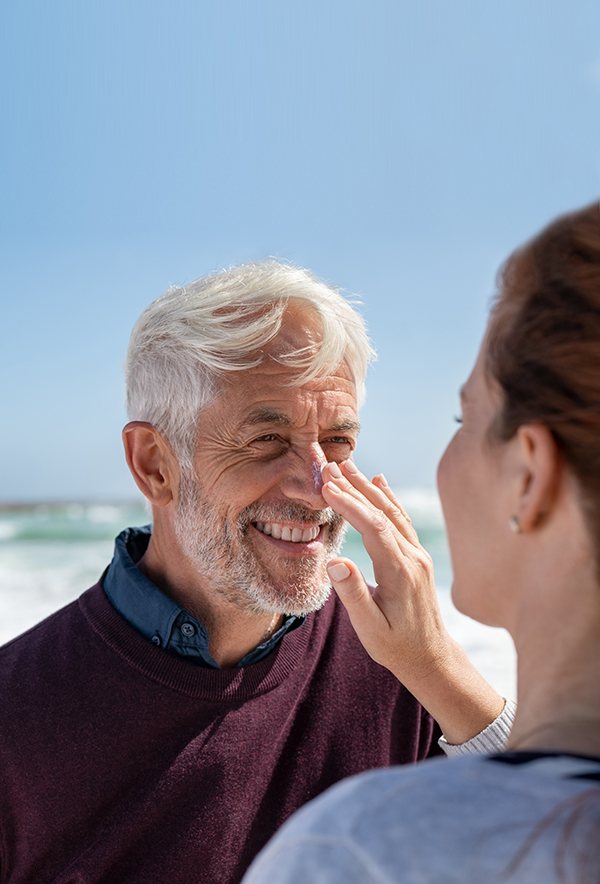
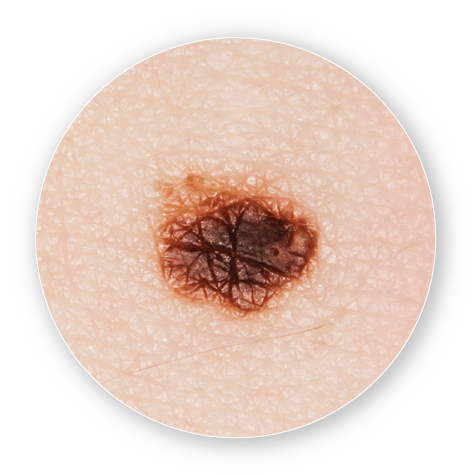 What is Basal Cell Carcinoma?
What is Basal Cell Carcinoma?
Basal Cell Carcinoma occurs most often on areas of the body frequently exposed to the sun – the face, ears, neck, scalp, shoulders, and back. Other contributing factors are exposure to or contact with arsenic or radiation, or complications from burns, scars, or tattoos. Basal Cell Carcinoma sometimes resembles psoriasis or eczema. Therefore, a physician should examine your skin regularly and suggest regular time intervals for examination depending upon your risk factors.
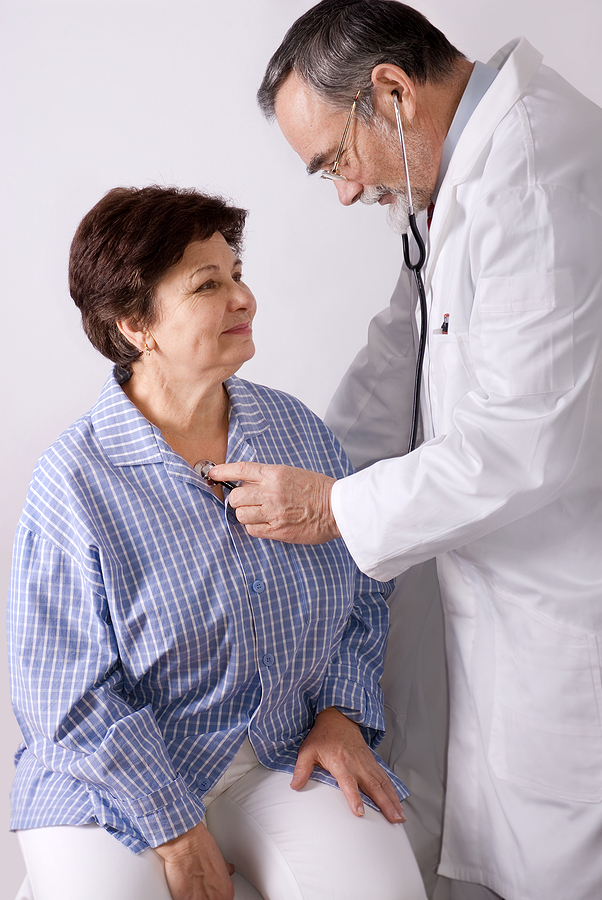
Spotting basal cell carcinoma
Watch for changes in size, color, texture, and appearance, as well as skin pain, bleeding, itching, or inflammation. Common characteristics of Basal Cell Carcinoma include a bleeding or non-healing sore, a reddish patch, a shiny bump, a pink growth, or a scarred area.
Who is most affected?
This slow-growing disease affects individuals who have regular exposure to sunlight. Until recently, this cancer was most common in older people, particularly men who worked outdoors. Now, however, more women and younger individuals are being diagnosed with Basal Cell Carcinoma, especially those who spend leisure time in the sun. People with fair skin; blonde or red hair; or blue, green, or gray eyes have higher than average risk. People with Basal Cell Carcinoma have about a 50% chance of developing another tumor within the next five years.4
How Is It diagnosed?
Your dermatologist or specialist will take a biopsy from the area of the skin with Basal Cell Carcinoma characteristics for the dermatopathologist to examine under a microscope.
How is treatment determined?
The dermatopathologist consults with your dermatologist or specialist after reviewing the biopsy results. Together, using their combined experience and knowledge, they determine treatment options most appropriate for your condition.
What should I look for?
The appearance of BCC varies from person to person and can sometimes be hard to identify. The three common forms are nodular, superficial, and morpheaform, all of which are based on how tissue samples look under a microscope. To the eye, they may look like red patches, shiny bumps, or open sores.
![[21680] Basal Cell 1](/media/2272/21680-basal-cell-1.jpg) |
An open sore that does not heal |
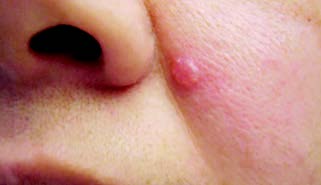 |
A shiny bump or nodule |
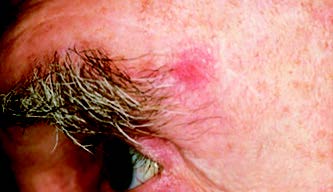 |
A reddish patch or irritated area |
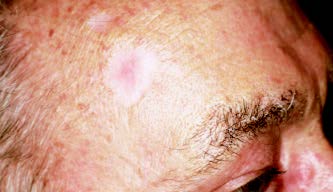 |
A scar-like area that is flat white, yellow or waxy in color |
![[21680] Basal Cell 5 (1)](/media/2277/21680-basal-cell-5.jpg) |
A small pink growth with a slightly raised, rolled edge and a crusted indentation in the center |
Skin cancer is the most common of all cancers,
yet it is the easiest to cure if diagnosed and treated early.

What treatment options are available?
Depending upon the size, depth, and location of Basal Skin Carcinoma, it can be treated by topical medications, curettage and electrodessication, surgery, or radiation therapy. It’s important to learn as much as you can about your treatment options and to make the decision that’s right for you.
• SURGICAL approaches include excisional surgery, during which a surgeon removes the tumor along with a margin of normal skin as a safety margin. The pathologist examines the removed tissue to assure all cancer cells are gone.
• MICROGRAPHY SURGERY is another surgical approach during which a physician removes the visible tumor and then removes surrounding skin one layer at a time. Each layer is checked under a microscope for signs of cancer until the physician is sure all the cancer is gone. This technique has the highest cure rate and can save the greatest amount of healthy tissue.
• CRYOSURGERY is a technique that can be performed without any cutting or anesthesia. Liquid nitrogen is applied to the tumor with a cotton-tipped applicator or spray device. The tumor then becomes dry and crusted and falls off. The procedure is repeated until the cancer is gone. Side effects may include temporary redness, swelling or loss of pigment.
• LASER SURGERY is often used for cancers on the lip, face, or scalp because this treatment provides surgeons with greater control over the depth of skin that is removed.
• PHOTODYNAMIC THERAPY is best used for cancers on the face and scalp or if individuals have multiple malignancies. A physician applies a topical treatment that is activated by a strong light. The treatment destroys cancer while sparing surrounding tissue.


